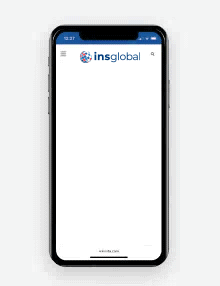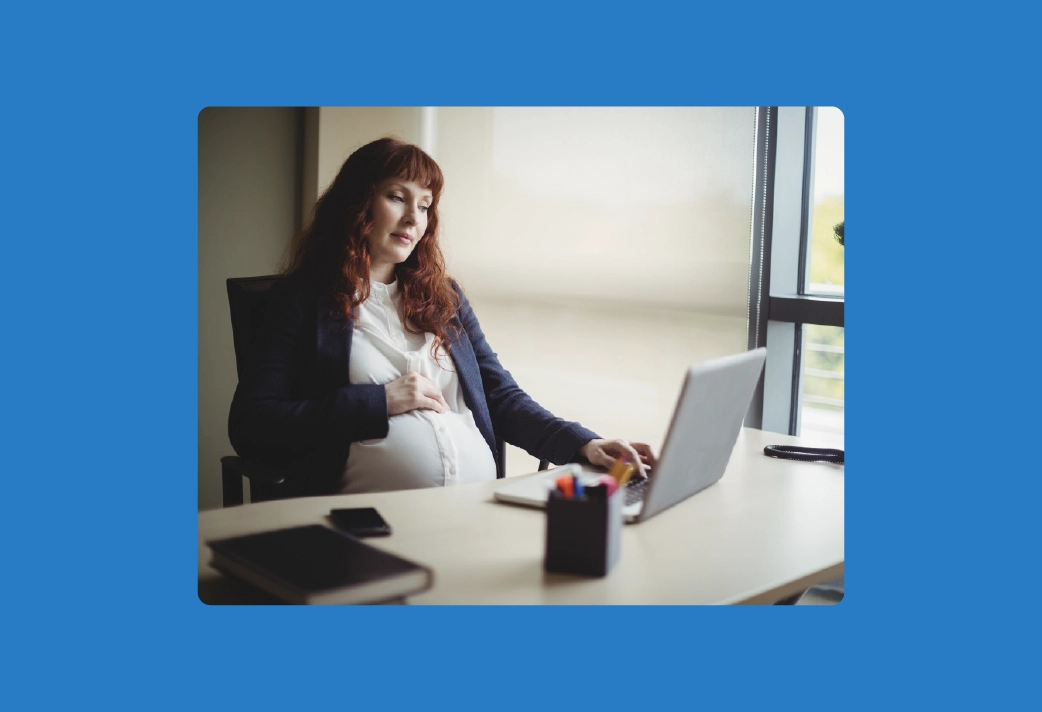Maternity leave in Norway is among the most comprehensive in the world, ensuring that parents have sufficient time to care for their newborn while maintaining financial stability. The Norwegian parental leave system is designed to support both parents, providing a combination of paid and unpaid leave with clear guidelines on eligibility and distribution. Understanding how these parental rights in the workplace function is essential for employees and employers alike, as parental leave laws, including those concerning maternity leave in Norway, are strictly regulated and enforced.
It is crucial to be familiar with the application process, entitlements, and specific conditions related to parental leave to make the most of the benefits available. That’s why we’ve asked our labor compliance experts to answer 45 of the most commonly asked questions on Norwegian maternity leave and parental benefits in Norway to put together this comprehensive guide. Alternatively, for a deep dive into many more aspects of labor rights in Norway for global employers, you can explore our country guide.

Tired of scrolling? Download a PDF version for easier offline reading and sharing with coworkers
Parental Leave in Norway: General Point About What You Should Know
The Norwegian system offers flexibility as a priority, allowing parents to choose between different leave periods based on their needs. First and foremost, the government provides parental benefits that ensure financial burdens do not prevent parents from taking time off.
How Do I Apply for Parental Leave and Benefits?
Applying for parental leave in Norway involves first submitting an application to the Norwegian Labour and Welfare Administration (NAV). Employees or their representative must then provide necessary documentation, including proof of employment and the expected due date, to ensure their eligibility. Applications should be submitted well in advance to avoid delays in receiving benefits.
The process is relatively straightforward, but understanding the different options available can be confusing for those unfamiliar with the system. Importantly, employees must coordinate with their employer to ensure compliance with both workplace policies and national regulations as well as ensure the smooth running of operations around leave as it’s taken.
It is also recommended to keep records of all communication and documents submitted to NAV to facilitate a smooth application process should any issues arise.
Who Is Entitled to Parental Benefits in Norway?
Parental leave in Norway are granted to employees and self-employed individuals who have been actively working for at least 6 of the 10 months before the birth or adoption of a child. These months do not have to be continuous.
To qualify for parental benefits, parents must also meet a minimum income threshold based on previous earnings equal to at least ½ of the “grunnbeløp” (G), or base amount, in the Norwegian National Insurance Scheme.
In some cases, parents who do not meet an income requirement may still be eligible for a lump-sum grant. This provides financial support to those who have limited work history in Norway but still need assistance during parental leave.
How Long Is the Parental Leave?
The total parental leave period available in Norway can extend up to 49 weeks with full salary compensation or 59 weeks with reduced compensation. This structure allows families to choose the plan that best suits their financial and personal needs and is designed to give both parents ample time to bond with their child while balancing work responsibilities.
However, the total amount of parental leave available is divided into different portions, with a reserved period for each parent, a shared period, and a partner quota. These allocations help ensure that both parents have the opportunity to take time off, promoting gender equality in caregiving responsibilities, though it may mean that the full amount of leave available to one parent is less than expected.
How Long Is the Maternity Leave (Specific Period)?
Maternity leave in Norway consists of a specific period within the total available amount of parental leave reserved exclusively for the mother. Expectant mothers are required to take 3-12 weeks of leave before childbirth and 6 weeks after delivery.
Beyond the mandatory maternity leave period, mothers can choose to extend their leave by utilizing the shared parental leave period (16 weeks of full pay or 26 weeks of partial pay). This flexibility allows families to tailor their leave according to their individual circumstances, ensuring that both parents can participate in early childcare.
How Much Leave Can a Partner Take?
Partners in Norway are entitled to their own portion of parental leave, commonly referred to as the “father’s quota” or, more accurately, the “partner’s quota.” This reserved period ensures that partners take an active role in childcare, typically spanning 15 weeks at full salary or 19 weeks at reduced salary.
To qualify, the partner must meet the same eligibility requirements as the primary caregiver. This allocation helps promote a balanced approach to parental responsibilities, supporting both parents in their professional and personal lives.
What About the Shared Period?
The shared period of parental leave (16 weeks of full pay or 26 weeks of partial pay) allows parents to decide how to distribute the remaining leave time between them. This flexibility enables families to structure their leave based on their unique needs, ensuring that both parents have time to bond with their child.
The shared period must be agreed upon and requested in advance, and both parents must coordinate with their employers to ensure a smooth transition between work and leave.
Can Both Parents Receive Parental Benefits at the Same Time?
Both parents can receive parental benefits simultaneously, but only under specific conditions.
The simultaneous receipt of benefits is typically allowed when one parent is on full-time leave while the other is working part-time. This setup provides families with the flexibility to share caregiving responsibilities while maintaining some level of income.
What Is Graded Parental Leave?
Graded parental leave is an option that allows parents to combine work and parental leave by reducing their working hours while still receiving partial benefits. This arrangement provides a level of financial support while enabling parents to maintain a connection with their jobs, which can be particularly beneficial for parents who want to extend their leave without a significant financial burden.
However, it should be remembered that employers and employees must agree on a suitable work schedule that accommodates both business needs and family priorities, making graded leave a more complex issue.
What Happens If You Take Paid Holiday During Your Parental Leave?
Employees in Norway are entitled to take paid holiday even during their parental leave period. In this case, the holiday period does not count towards the total parental leave entitlement.
It is important to inform both the employer and NAV about planned holidays to ensure compliance with labor laws as taking paid holidays during parental leave would otherwise extend parental leave beyond the standard available duration.
In general, proper planning and employer/employee consultation are key to allowing parents to maximize their time off while maintaining their parental benefits.
Can You Travel Abroad During Parental Leave?
Generally connected with taking paid holiday, traveling abroad during parental leave is permitted, but certain conditions must be met. Parents must inform NAV of their travel plans, and their benefits must comply with Norwegian regulations regarding duration.
Failure to notify NAV could result in a suspension of benefits, so it is advisable to clarify the travel rules before making any arrangements. Parents should also ensure that their leave schedule does not interfere with their return-to-work obligations.
What Happens If You or Your Partner Needs to Take Long-Term Sick Leave?
If either parent experiences a long-term illness during parental leave, special provisions may apply. In such a case, parents may be eligible for extended benefits, including a transfer of parental leave to the healthy parent.
Medical documentation is required to apply for these benefits, and NAV assesses each case individually, meaning acceptance is not guaranteed.
What If You Are a Single Parent?
Single parents in Norway are entitled to the full parental leave period of both parents, ensuring that they receive the same level of support as dual-parent households. Importantly, this includes full parental benefits as well as the ability to manage leave flexibly.
Additional financial support or childcare assistance may also be available for single parents, though it is typically the responsibility of the state, not the employer.
Are You Entitled to Leave in Connection with Pregnancy, Childbirth, and Adoption?
Expectant mothers and adoptive parents are entitled to leave related to pregnancy, childbirth, and adoption. This includes pre-birth leave for mothers, post-birth recovery leave, and similar leave allowances for adoptive parents.
Each category of leave has specific requirements, and NAV provides detailed guidance on eligibility. Ensuring that applications are submitted on time is crucial for accessing these benefits.
Parental Benefit: Specific Q&As Regarding Payments
Are You Entitled to Parental Benefits During Leave?
Parental benefits provide financial support for parents taking leave, though only employees who meet the required work and income thresholds given above are eligible for these benefits, ensuring income security during time off.
NAV then determines benefit amounts based on the applicant’s income history and other criteria. It is important to check eligibility before planning leave to avoid financial uncertainty.
Are You Entitled to Other Benefits If You Are Not Entitled to Parental Benefit?
If parents do not qualify for standard parental benefits, alternative support options may be available. This includes lump-sum grants for parents with insufficient work history or those outside of standard employment structures.
NAV provides guidance on accessing these alternative benefits, ensuring that all parents have financial support regardless of their employment background.
How Do You Apply for Parental Benefit and a Lump-Sum Grant?
Applications for parental benefits and lump-sum grants must be submitted to NAV. Required documentation includes proof of employment, income records, and birth/adoption certificates (with the last being provided after the birth or adoption of the child).
Early submission is recommended to avoid payment delays, and today, online applications through the NAV website provide a streamlined process for faster approvals.
What Applies If You Move to Another Nordic Country Before or During the Leave?
As the Nordic countries cooperate heavily in terms of many social security system elements, parental benefits are still applicable if you relocate within the Nordic region.
Similarly, movement within the EU/EEA will typically mean that earned parental benefit remains applicable. In this case, continued eligibility requires you not to work for the remainder of the time during which parental benefits are received.
Most importantly, it is essential to notify NAV of any international moves to prevent disruptions in payments or eligibility.
How Is Parental Benefit Calculated?
Parental benefit is based on income from the previous year, or the average of the previous 3 years for self-employed workers. NAV uses standard calculations to determine payment amounts, aligning them to the salary received before taking leave, or 80% if the longer period of leave is chosen.
How Long Can You Receive Parental Benefit?
Parental benefits are available for up to 49 weeks at full salary or 59 weeks at a reduced rate (80%). Choosing the appropriate benefit duration will depend on financial needs and family planning considerations.
Parents must declare their chosen leave structure in advance when applying for benefits to ensure smooth processing and allow employers to adjust needs accordingly.
What Are the Tax Implications of Receiving Parental Benefits?
Parental benefits are taxable income in Norway. Taxes are deducted at the standard rate, and parents must report their benefits in annual tax returns.
NAV provides tax-related documentation with parental benefits to help with compliance with national tax regulations.
Can You Continue Working Part-Time While Receiving Parental Benefits?
Working part-time while receiving parental benefits is allowed under Norway’s graded parental leave policy, meaning parents can receive partial benefits while maintaining part-time employment.
However, NAV must be informed of work arrangements to ensure compliance with benefit regulations.
What Happens If You Take a Break During Your Parental Leave?
Parents who need to pause their leave for medical or work-related reasons must notify NAV. Breaks in parental leave as a result of this choice may affect benefit eligibility and must be formally approved in advance.
Proper documentation is required to facilitate a smooth transition back into the leave period.
Are There Any Income Requirements for Eligibility for Parental Benefit?
To qualify for parental benefits, parents must meet a minimum income threshold based on previous earnings equal to at least half of the “grunnbeløp” (G), or base amount, in the Norwegian National Insurance Scheme. This would make the requirement in 2025 NOK 65,080 (around half the G of NOK 130,160 for 2025).
Self-employed individuals and part-time workers have alternative criteria to fulfill specific to their situation
Can You Transfer Parental Benefits Between Parents?
Parental benefits can be transferred under certain conditions, allowing flexibility for families, though transfers must be formally approved and recorded with NAV.
Special Circumstances Regarding Parental Leave
What If the Child Is Born Prematurely?
Premature births may qualify parents for extended benefits, depending on the specific circumstances. Additional leave or special medical allowances are available.
NAV assesses each case individually to provide necessary support.
What If You Have a Multiple Birth?
Parents of twins or multiple births receive extended leave benefits. This amounts to 66 weeks total for twins or 95 weeks total for triplets at full rate, and 95 weeks for twins and 115 weeks total for triplets at 80%.
Applying for extra benefits in advance is recommended.
What Happens If the Child Is Placed for Adoption During the Leave Period?
If a child is placed for adoption during the parental leave period, parental benefits stop as soon as the child leaves your care.
The Norwegian parental leave system acknowledges adoption as a significant life event and provides leave entitlements to adoptive parents the same as biological parents.
Adoptive parents must notify NAV and submit relevant adoption documents to become eligible for their leave status. This ensures a smooth transition and continued financial support during the bonding period with the adopted child.
Can You Extend Your Parental Leave Under Special Circumstances?
Under special circumstances, parental leave may be extended. This can happen if a child or parent experiences medical complications requiring additional care, among similar situations.
Parents must submit medical documentation and a formal request to NAV for consideration. Employers are also required to accommodate approved leave extensions in accordance with labor laws.
Parental Leave and Employment Rights
What Happens to Your Job During Parental Leave?
Employees taking parental leave in Norway are entitled to job protection during the period of their leave and after. Employers must ensure that taking parental leave does not negatively impact career progression, salary adjustments, or work-related benefits, as doing so would be grounds for legal action by the employee.
Norwegian labor laws ensure that employees returning from parental leave can resume their previous position or a comparable role with the same pay and conditions.
Can Your Employer Terminate Your Employment During Parental Leave?
Employers are expressly prohibited from terminating employees due to parental leave; however, dismissals during parental leave may be justified by exceptional circumstances unrelated to the leave itself.
If an employer wrongfully terminates a parent on leave, legal action can be taken, and NAV and labor unions typically provide support to affected employees.
Do You Need to Notify Your Employer About Your Parental Leave in Advance?
Employees must notify their employer about parental leave plans in advance. The minimum notification period is typically 3 months before the intended leave start date, but employers may request additional time for workforce planning.
Clear communication with employers ensures smooth transitions and minimizes disruptions to work operations.
What Protections Do You Have Against Discrimination During Parental Leave?
Norwegian law prohibits workplace discrimination based on parental leave. Employees must not face reduced career opportunities, pay cuts, or negative treatment due to taking leave.
Employees who experience discrimination can seek legal redress through NAV, labor unions, or the Equality and Anti-Discrimination Ombud office.
Partner Leave
Is a Partner Entitled to Parental Leave Immediately After Childbirth?
In Norway, partners are entitled to take special leave immediately after childbirth to support the mother and care for the newborn. This initial period of paid leave typically lasts for a minimum of 2 weeks and is separate from the paternal, or partner’s, quota of parental benefits.
This provision ensures that families receive adequate support in the crucial early days following childbirth. Employers are required to accommodate this leave, and partners should notify their workplace in advance to arrange for time off accordingly.
What Type of Leave Can a Partner Take During the Pregnancy?
Partners are entitled to leave as required before the birth to attend medical check-ups and provide support to the expectant mother. This is commonly known as “partner attendance leave.”
The number of days granted varies by employment contracts or individual arrangements, and additional unpaid leave may be arranged with the employer.
How Does Parental Leave for the Partner Differ From Maternity Leave?
The Partner leave quota is currently intended to be the same as maternity leave at 15 weeks (however, the length of this period is subject to regular debate and change, so it may change in the near future). Additionally, the 2 weeks of paid leave that is provided to partners at the birth of their child is intended to supplement, rather than replace, maternity leave.
Other Practical Considerations for Non-Indefinite of Full-Time Employed Workers
How Do You Plan Your Leave If You Are Self-Employed?
Self-employed individuals must plan parental leave by taking extra care when coordinating with NAV to ensure consistent financial support. Maintaining business operations during leave may require hiring temporary help or adjusting client schedules to ensure continued service provision.
What If You Are on a Fixed-Term Contract or a Temporary Job?
Employees on fixed–term or temporary contracts are entitled to parental leave under the same conditions as permanent employees, so long as they meet the nav requirements. However, benefits cease if the contract ends during the leave period unless new employment is secured.
Temporary workers should discuss their leave options with employers and NAV to plan accordingly.
How Does Parental Leave Work If You Are Employed Part-Time?
Part-time employees are entitled to parental leave and benefits proportional to their working hours. Parental benefits are calculated based on income, ensuring that part-time workers receive equitable support.
Employers and NAV can provide further guidance on structuring leave for part-time employees to maximize benefits.
International Considerations
What Happens If You Are Working in Norway but Live Abroad?
Cross-border workers who work in Norway but reside elsewhere may still be eligible for Norwegian parental benefits, depending on social security agreements.
NAV determines eligibility based on residency status and tax contributions. It is essential to clarify rights before taking leave.
Can You Receive Parental Benefits If You Are a Foreign National in Norway?
Foreign nationals working in Norway may qualify for parental benefits in the same way as citizens if they meet employment and income criteria. Non-residents should check visa and work permit requirements related to leave entitlements.
NAV provides specific guidance for foreign workers on accessing benefits while complying with national policies.
How Does Parental Leave Work for EU/EEA Citizens Living in Norway?
EU/EEA citizens benefit from Norway’s parental leave system under reciprocal agreements. They must ensure compliance with residency and work requirements to access benefits.
Coordination with home country social security offices may be necessary for continued parental benefits when relocating.
Financial Aspects of Parental Leave
How Is the Payment Structured During Parental Leave?
Parental benefits can be received as full compensation for 49 weeks or reduced payments over 59 weeks. Payments are calculated based on average income from the previous year.
NAV provides online tools to estimate benefit amounts and plan accordingly.
What Is the Difference Between Paid and Unpaid Leave?
Paid leave guarantees financial support for eligible parents, while unpaid leave allows for additional time off without compensation. Employees should discuss unpaid leave options with their employer.
Employers may allow unpaid leave extensions, but these must align with labor agreements.
How Does Your Income Impact the Amount of Parental Benefits You Receive?
Parental benefits are based on prior earnings, meaning higher incomes result in increased benefit payouts.
Self-employed individuals and freelancers should ensure that their tax and income records accurately reflect earnings to optimize benefit calculations.
Take the Next Step with INS Global
Understanding Norwegian maternity leave and parental benefits on a worldwide scale can be complex, especially for foreign employees and businesses navigating compliance requirements. INS Global offers expert guidance to help businesses and employees manage parental leave policies while ensuring full compliance with Norwegian labor laws during an expansion.
If you need support with parental benefits in Norway or any one of the 160+ countries we serve, as well as information on employer responsibilities, or leave management strategies, INS Global is here to help.
Contact us today to learn more about how we can simplify your global workforce management needs through recruitment, payroll, or our Employer of Record (EOR) in Norway.






SHARE